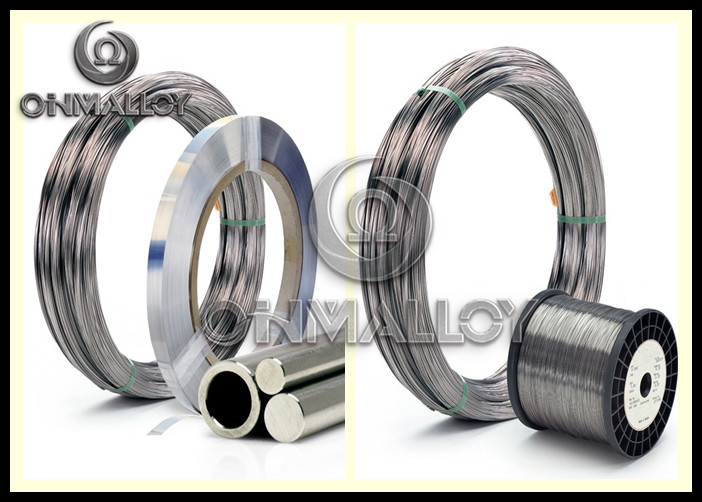CrNi1560 Nichrome Alloy 8.2 g/cm3 Density Nichrome Heater Wire For
Furnaces
OhmAlloy112
(Common Name:Ni60Cr15,Chromel C, Nikrothal 60, N6, HAI-NiCr 60,
Tophet C, Resistohm 60, Cronifer II,Electroloy, Nichrome, Alloy C,
Alloy 675,Nikrothal 6, MWS-675, Stablohm 675,NiCrC)
OhmAlloy112 is a nickel-chromium alloy (NiCr alloy) characterized
by high resistivity, good oxidation resistance ,good form stability
and good ductility and excellent weldability. It is suitable for
use at temperatures up to 1150°C.
Typical applications for OhmAlloy112 are used in metal sheathed
tubular elements,for example,hot plates,
grills,toaster ovens and storage heaters.The alloys is also used
for suspended coils in air heaters in clothes dryers,fan
heaters,hand dryers etc.
Normal composition%
| C | P | S | Mn | Si | Cr | Ni | Al | Fe | Other |
| Max |
| 0.08 | 0.02 | 0.015 | 0.60 | 0.75~1.60 | 15.0~18.0 | 55.0~61.0 | Max 0.50 | Bal. | - |
Typical Mechanical properties(1.0mm)
| Yield strength | Tensile Strength | Elongation |
| Mpa | Mpa | % |
| 370 | 730 | 35 |
Typical Physical properties
| Density (g/cm3) | 8.2 |
| Electrical resistivity at 20℃(Ωmm2/m) | 1.12 |
| Conductivity coefficient at 20℃ (WmK) | 13 |
| Coefficient of thermal expansion |
| Temperature | Coefficient of Thermal Expansion x10-6/℃ |
| 20 ℃- 1000℃ | 17 |
| Specific heat capacity |
| Temperature | 20℃ |
| J/gK | 0.46 |
| Melting point (℃) | 1390 |
| Max continuous operating temperature in air (℃) | 1150 |
| Magnetic properties | non-magnetic |
Temperature Factors Of Electrical Resistivity
| 20℃ | 100℃ | 200℃ | 300℃ | 400℃ | 500℃ | 600℃ |
| 1 | 1.011 | 1.024 | 1.038 | 1.052 | 1.064 | 1.069 |
| 700℃ | 800℃ | 900℃ | 1000℃ | 1100℃ | 1200℃ | 1300℃ |
| 1.073 | 1.078 | 1.088 | 1.095 | 1.109 | - | - |
Style of supply
| Alloys Name | Type | Dimension |
| OhmAlloy112W | Wire | D=0.03mm~8mm |
| OhmAlloy112R | Ribbon | W=0.4~40 | T=0.03~2.9mm |
| OhmAlloy112S | Strip | W=8~250mm | T=0.1~3.0 |
| OhmAlloy112F | Foil | W=6~120mm | T=0.003~0.1 |
| OhmAlloy112B | Bar | Dia=8~100mm | L=50~1000 |
What are the applications?
Resistance wires are manufactured from nickel alloys which have
specialist properties such as electrical resistance, oxidation
resistance, strength and corrosion resistance – all at elevated
temperatures.
Resistance wire is thus used primarily in resistance heating
elements, hot wire cutting, heat sealing, resistors and springs and
fasteners for high technology industries. It is also used
extensively as a glass sealing element.


